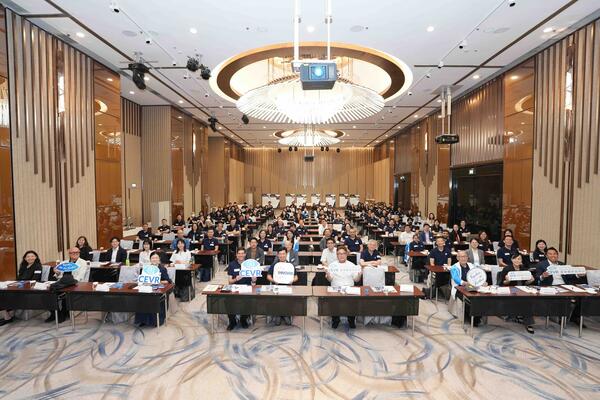
Cutting-edge contact lens gel delivers medication
Waterloo researchers develop 3D-printed hydrogel for continuous drug delivery via contact lenses

Waterloo researchers develop 3D-printed hydrogel for continuous drug delivery via contact lenses
By Media RelationsThe next time you need to take a prescription drug, taking it might be as easy as putting on a contact lens, thanks to a new discovery made by University of Waterloo researchers.
The team of researchers – which spans Waterloo’s Department of Chemistry and its School of Optometry and Vision Science – created a new type of hydrogel that can deliver drugs to patients with various eye issues when 3D printed onto a contact lens. The hydrogel, a type of gel that can retain significant volumes of water, is silicone-based and can help control the amount of medication a person would need, continuously delivering it as long as the contact lens is worn.
Using these hydrogel-loaded contact lenses could help physicians reduce pain and the number of times the patient has to apply the drug, as the medication is delivered during normal contact lens wear.
Even though silicone can be tricky to 3D print, this new hydrogel is different. It uses a special type of silicone that easily attracts water and is curable with UV light. After curing, the gel is both flexible and durable enough to keep its shape after being stretched and compressed.

An example of a contact lens with the Waterloo research team's hydrogel "stitched" on it. The hydrogel is 3D-printed throughout the periphery of the lens. (University of Waterloo)
“Once we knew the hydrogel had good strength and flexibility, we decided to test its ability to hold and release drugs by using amoxicillin, a commonly prescribed antibiotic for ailments related to the eye,” said Shirley Tang, a Waterloo professor in the Department of Chemistry and Associate Dean, Research in the Faculty of Science.
The researchers found that the hydrogel's macro-porous structure helped regulate the release of amoxicillin over time during lab testing. The hydrogels were also found to be injectable and extrusion printable, meaning they could easily be printed onto a contact lens.

Waterloo researcher Sayan Ganguly holds an example of the hydrogel 3D printed in a different format which the Waterloo team developed to comfortably deliver eye medication through a contact lens. (University of Waterloo)
“This concept is much more efficient and easier to comply with than using eye drops, which are often difficult to insert for patients and need frequent administration over the day,” said Lyndon Jones, a Waterloo professor in the School of Optometry and Vision Science and director of the Centre for Ocular Research & Education.
The research team also wanted to test the shelf stability of the hydrogel material and found that the drug encapsulation was exceptionally stable after a month.
“After being encapsulated in the gel and stored for a month, the amoxicillin was found to have negligible changes,” said Sayan Ganguly, a post-doctoral researcher in the Department of Chemistry. “Our results showed that this hydrogel is safe for human eyes and can be effectively used in diverse biomedical applications.”
With their recently filed patent, the researchers aim to expand the use of contact lenses for treating eye illnesses.
The paper, “Injectable and 3D Extrusion Printable Hydrophilic Silicone-Based Hydrogels for Controlled Ocular Delivery of Ophthalmic Drugs,” was recently published in ACS Applied Bio Materials.

Read more
Here are the people and events behind some of this year’s most compelling Waterloo stories

Read more
The InnoHK Centre for Eye and Vision Research aims to bring eye and vision research to market through Waterloo-Hong Kong partnership

Read more
15 University of Waterloo researchers have been named to the annual Highly Cited Researchers™ list for significant contributions to their specific fields of research
The University of Waterloo acknowledges that much of our work takes place on the traditional territory of the Neutral, Anishinaabeg, and Haudenosaunee peoples. Our main campus is situated on the Haldimand Tract, the land granted to the Six Nations that includes six miles on each side of the Grand River. Our active work toward reconciliation takes place across our campuses through research, learning, teaching, and community building, and is co-ordinated within the Office of Indigenous Relations.